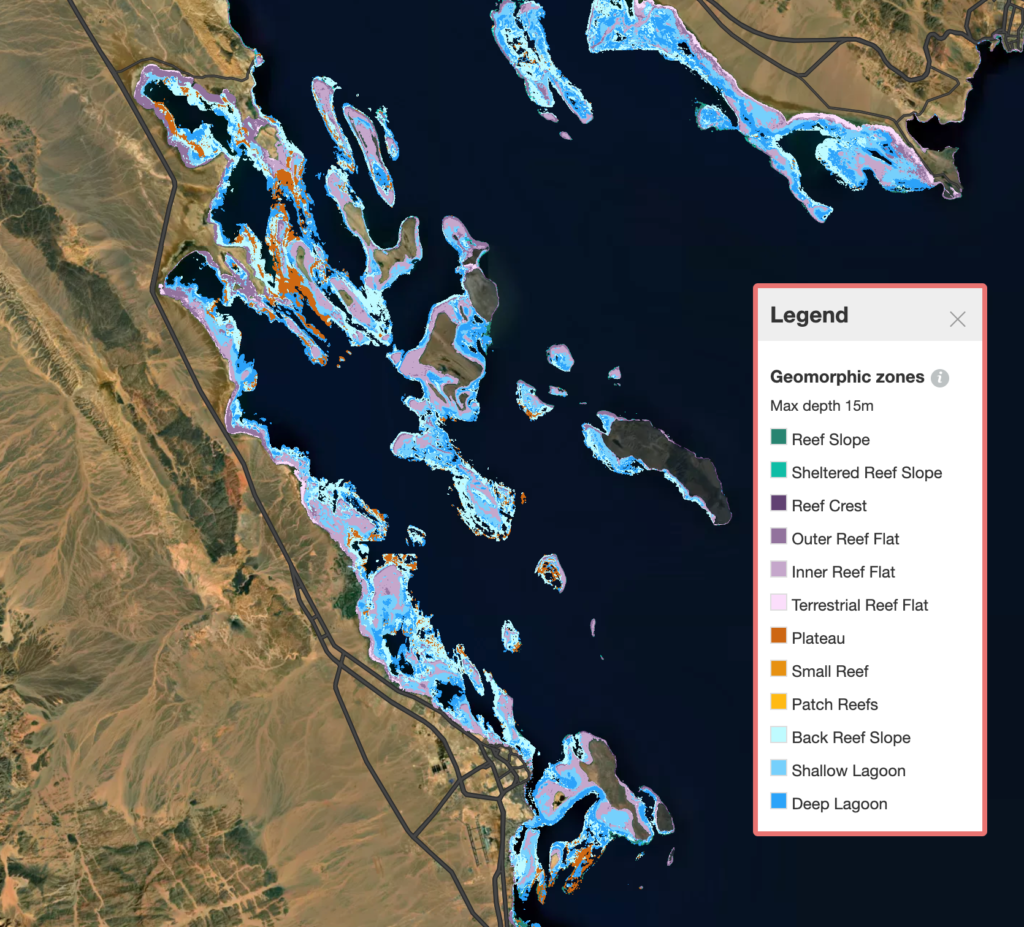Could a map be used to estimate the likelihood that a coral reef can adapt to climate change? That’s one of the biggest questions driving our Global Conservation Science team these days.
In collaboration with the Allen Coral Atlas (the Atlas), a global map and monitoring system for shallow water coral reefs, we are leading new, cutting-edge research to determine the Atlas’s ability to identify which reefs are more likely to be able to adapt to climate change. CORAL’s Conservation Science Director, Dr. Helen Fox, is spearheading the initiative and working with researchers at the University of Miami and an independent postdoc.
Identifying Key Coral Reefs
The Atlas consists of different data layers that online users can turn on or off to view characteristics of a reef, like bottom type and reef structure, which is mapped from imagery detected by satellites in space, and then ground-truthed by local scientists around the world.

Scientists, including Fox, predict—and are working to prove—that the areas shown by the Atlas to have a wide range of diversity in reef type and structure correlate to a high range of temperatures on a reef. This would likely mean greater genetic diversity of corals. If that’s the case, then the Atlas could be used to predict which reefs have a higher potential of adapting to climate change.
Around the world, coral reefs are suffering from the impacts of warming ocean temperatures—which is the cause of mass bleaching events and the loss of 14 percent of the planet’s corals in the last decade. But research has shown that some corals can adapt to these higher temperatures. It is important to reduce human impacts in these “hot reef” areas so those heat-adapted corals can reproduce and spread their genes.
“As the oceans warm, we are hoping there are some corals that can survive the warming waters,” says Fox. “We then want those corals to reproduce, so they build future generations of coral that are also able to tolerate warmer temperatures.”
Improving Marine Spatial Planning
If Fox and her team determine that the Atlas can, in fact, be used to estimate a reef’s adaptation potential, the next step will be to use this data layer during marine spatial planning. That would give decision-makers the information needed to help prioritize protections for coral reefs that have a higher potential of adapting to future ocean conditions.
Many countries and coastal regions are already setting goals to increase the number of marine protected areas (MPAs) in their waters. Some areas, like Hawai’i, have pledged to protect at least 30 percent of its coral reefs with MPAs by 2030. Those MPAs could be even more effective if they include coral reefs that could help spread adaptive traits to other coral reefs.
“We are fighting to protect an incredibly valuable marine ecosystem,” says Fox. “The loss of coral reefs will be devastating for the ocean, as well as for coastal communities that rely on them for food and income.”

Using the Atlas for Real Change
Since launching last year, the Atlas has been used in many parts of the world. From Mozambique to Sri Lanka to the Bahamas, the map has supported research and improved planning strategies, in the hopes of ultimately helping preserve the health of coral reefs.
Our work to better understand which coral reefs have a higher potential of adapting to climate change will ultimately benefit these many conservation efforts. According to Fox, acting now is essential as the fate of coral reefs will likely be decided in the next 25 years.
It’s up to us to turn our science into action—and fight to save this irreplaceable ecosystem. Your generous donations help support our ongoing work to conduct cutting-edge research and support new technologies, like the Allen Coral Atlas.
